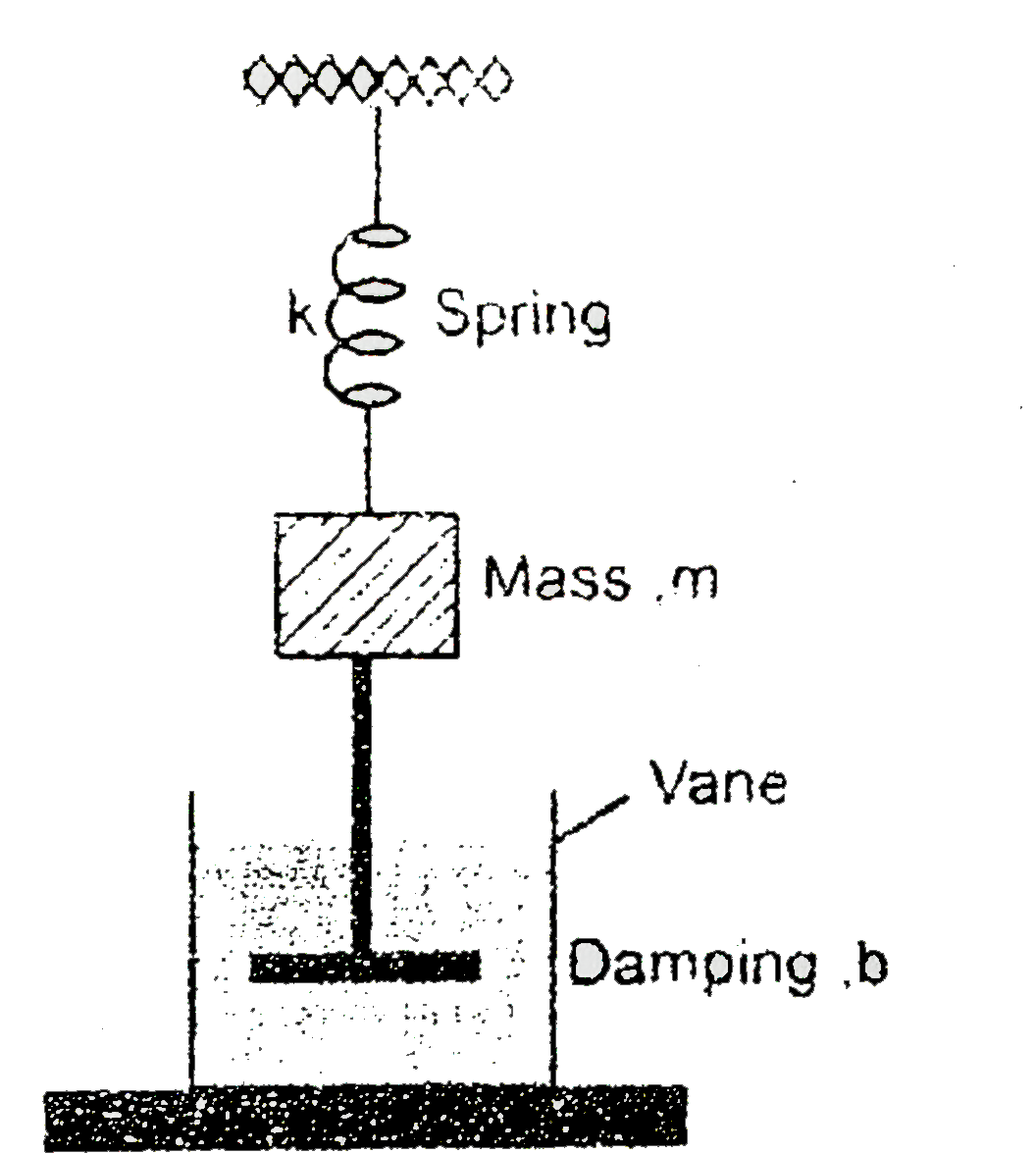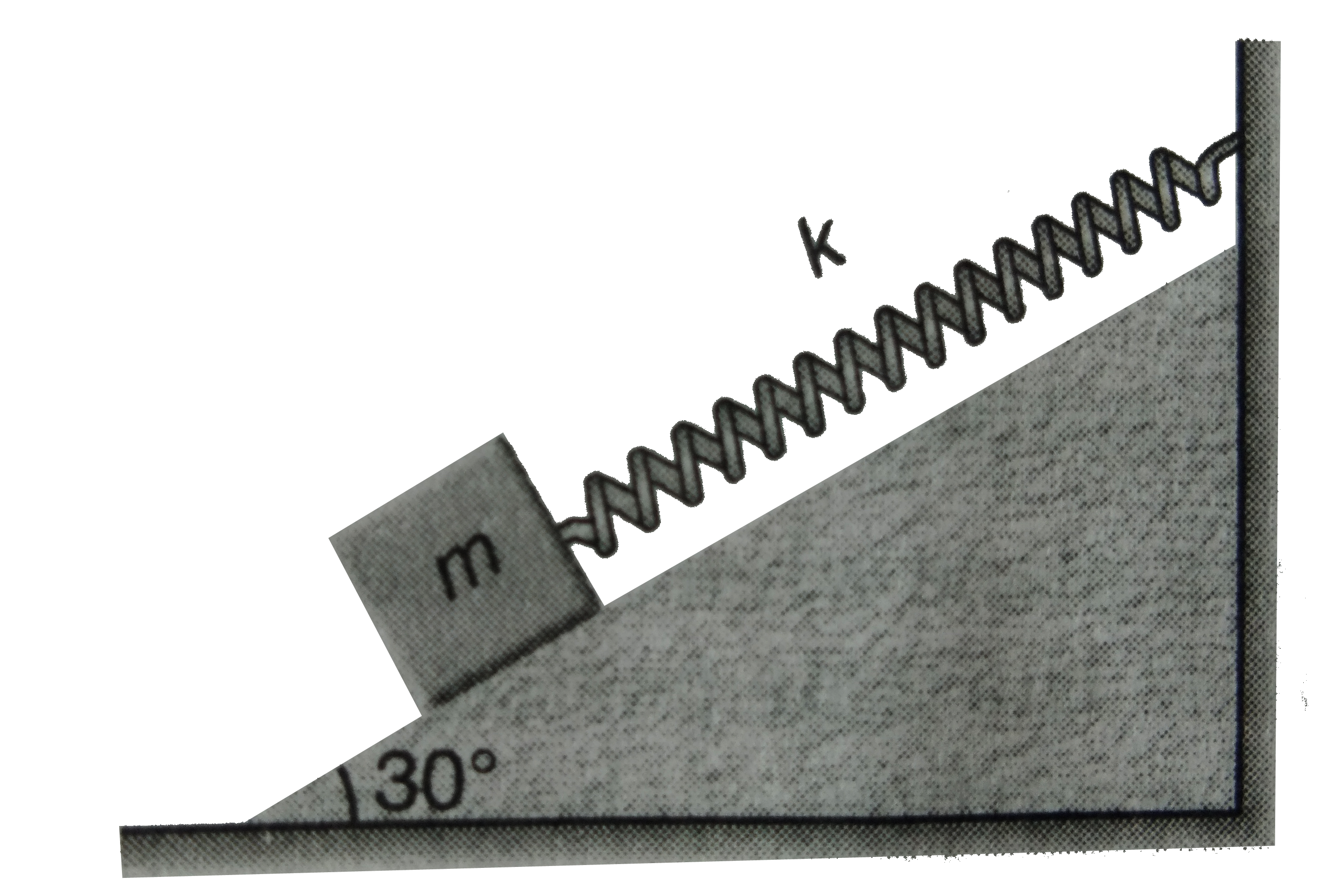In damped oscillatory motion a block of mass 20kg is suspended to a spring of force constant 90N/m in a medium and damping constant is 40g/s. Find (a) time period of oscillation (b) time taken for amplitude of oscillation to drop to half of its intial value (c) time taken for its mechanical energy to drop to half of its initial value.
(a) We see that km=90×0.2=18kgNm−1=kg2s−2, therefore √km=4.243kgs−1, and b=0.04kgs−1. Therefore, b is much less than √km. Hence, the time period T from Eq. (14.34) is given by
T=2π√mk
=2π√0.2kg90 N m−1
=0.3s
(b) Now, from Eq. (14.33), the time T1/2, for the amplitude to drop to half of its intial value is given by,
T1/2=ln(1/2)b/2m
=0.69340×2×200s
=6.93s
(c) For calculating the time t1/2, for its mechanical energy to drop to half its initial value we make use of Eq. (14.35). From this equation we have,
E(t1/2)/E(0)=exp(−bt1/2/m)
Or 1/2=exp(−bt1/2/m)
ln(1/2)=−(bt1/2/m)
Or t1/2=0.69340g s−1×200g
=3.46s
This is just half of the decay period for amplitude. This is not suprising because, according to Eqs. (14.33) and (14.35), energy depends on the square of the amplitude. Notice that there is a factor of 2 in the exponents of the two exponentials.
Topper's Solved these Questions
Similar Questions
For the damped oscillator shown in previous Figure, the mass m of the block is 400 g, k=45Nm−1 and the damping constant b is 80gs−1. Calculate .
(a) The period of osciallation ,
(b) Time taken for its amplitude of vibrations to drop to half of its initial value and
(c ) The time taken for its mechanical energy to drop to half its initial value.
View SolutionFor the damped oscillator shown in Fig, the mass of the block is 200g,k=80Nm−1 and the damping constant b is 40gs−1 Calculate
(a) The period of oscillation
(b) Time taken for its amplitude of vibrations to drop to half of its initial values
(c) The time for the mechanical energy to drop to half initial values

View Solution
Knowledge Check
In the question number 93, the time elapsed for its mechanical energy to drop half of its initial value is
A2.5 sB3.5 sC4.5 sD7.5 sFor the small damping oscillator, the mass of the block is 500 g and value of spring constant is k = 50 N/m and damping constant is 10 g s^(-1) The time period of oscillation is (approx.)
A2πsB2π13sCπ5sDπ√5sA block off mass 200 g executing SHM under the unfluence of a spring of spring constant k=90Nm−1 and a damping constant gb=40gs−1. The time elaspsed for its amplitude to drop to halff of its initial value is (Given, ln (1/2)=−0.693)
A7sB9sC4sD11s
A block of mass 0.2 kg is attached to a mass less spring of force constant 80 N/m as shown in figure. Find the period of oscillation. Take g=10m/s2. Neglect friction

View SolutionFor the damped oscillator of Fig. 15.20, m= 250g, k= 85N/m, and b= 70g/s
How long does it take for the mechanical energy to drop to one-half its initial value?
View SolutionA block of mass 'm' is attached to the light spring of force constant K and released when it is in its natural length. Find amplitude of subsequent oscillations.
View Solution
The period of oscillation of a mass M suspended from a spring of spring constant K is T. the time period of oscillation of combined blocks is
View SolutionThe displacement of a damped harmonic oscillator is given by x(t)=e−0.1tcos(10πt+ϕ). Here t is in seconds
The time taken for its amplitude of vibration to drop to half of its initial is close to :
View Solution
